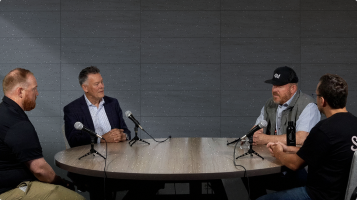Global Subsurface Mapping: Complete Guide
Written by

Published on
March 25, 2021


Table of contents
Some interesting recent developments around the world are bringing the importance of subsurface mapping into the forefront, and putting a spotlight on the darker sides of the construction industry lying underground.
Current reality is that any attempt at discovering what is hiding underground is a massive undertaking, requiring expertise and experience. For each project multiple different organizations have to be contacted and coordinated, with data delivered in varied formats, quality, and on different timelines. Obviously, this method is extremely inefficient and often results in an increased risk of utility strikes, project delays and budget overruns.
No longer bound by the existing lack in information collection, many governmental and regulatory agencies are investing major resources into expanding and improving their knowledge of underground infrastructure. One example is the recently completed national pilot program by the British government called the National Underground Asset Register, or NUAR for short.
The pilot program, led by the special Geospatial Commission was launched with the aim to better mapping efforts of underground assets by creating a data exchange platform to provide a digital map of asset locations, test its usability and asses any impact on the probability of accidental strikes and other inefficiencies.
Another large-scale attempt currently underway is the Digital Underground Project in Singapore, launched by the Singapore Land Authority together with Singapore-ETH Centre.
Part of a larger 10-year developmental plan, the objective of this government-private sector collaboration is creating a realistic, digital representation of the subsurface and any existing infrastructure underground. As a highly congested urban area, the use of underground space is strategic in creating space for the city-state's future.
Acknowledging the significance of reliable and accurate data, the Singapore authorities are working towards a unified database to be shared and used by the various stakeholders such as utility providers, construction companies, planning and regulatory bodies.
In Israel another approach was taken, with government agencies turning to the high-tech industry for innovations and advanced solutions to the obstacles in subsurface mapping.
Earlier this year, the Israeli National Transport Infrastructure Company, Netivei Israel, launched a Subsurface Infrastructure Locating and Mapping Challenge, inviting technology startups to demonstrate their capabilities of fast and accurate mapping of subsurface infrastructures.
The challenge, in which 4M Analytics was named a finalist, called for participants to apply their processes in locating and mapping existing infrastructure and potential hazards in a given 10 km land parcel, and doing so within a specified time frame. The inclusion of a time factor is not arbitrary, as eliminating delays and ensuring timely execution of project plans represents huge value for all parties involved.
These projects are just the proverbial 'tip of the iceberg' when it comes to subsurface mapping, as public and private sector players alike are putting an emphasis on the quality and efficacy of their mapping data as an integral part of every future development.
These ventures which bring together cutting-edge technology with government and regulatory support are precursors to a larger shift in the industry, focusing on finding better solutions to lasting, existing problems and unlocking the value hidden underground.
Recent blog posts

Our Newsletter
Join 7k infrastructure professionals
Get monthly insights on ways to build smarter, faster and safer with Utility AI.

.avif)




